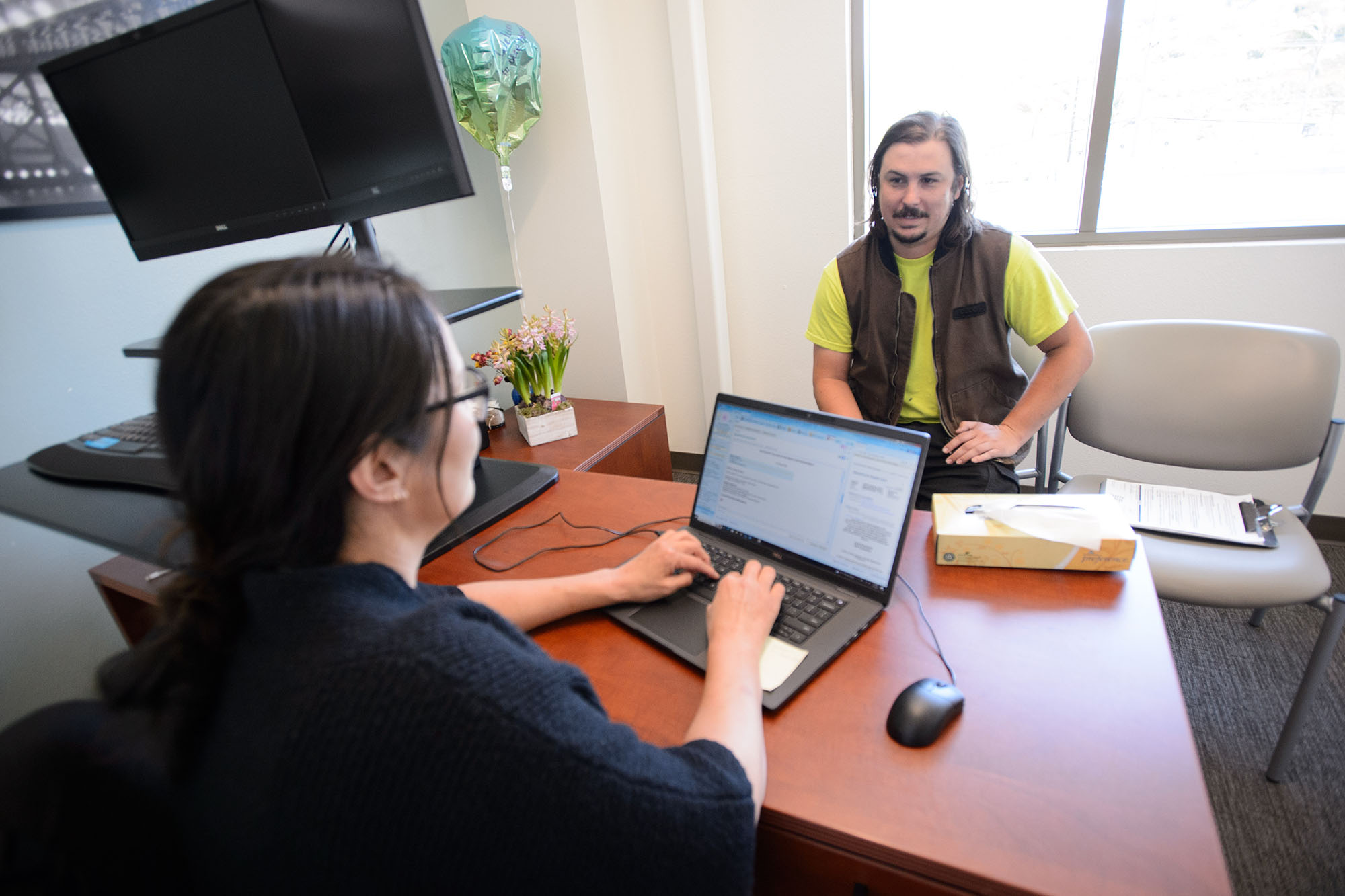
More than 1.4 million Californians with low incomes are enrolled in both the state-administered Medi-Cal program and the federal Medicare program. In contrast with Californians enrolled solely in Medicare, these state residents are more likely to be people of color, to need help at home, and to have multiple chronic diseases such as mental health conditions. On average, dual-eligible enrollees account for the greatest level of need and the highest costs within the Medicare and Medi-Cal enrollee populations. Their high levels of complexity and cost also create immense opportunities for high-value innovation. Any solution that can improve outcomes for these patients stands to improve individual lives and generate significant cost savings.
CHCF in September published a primer that provided an overview of dual-eligible Californians, including who they are and how they receive care. The CHCF Innovation Fund also asked Andrey Ostrovsky, MD, an angel investor, physician, and former chief medical officer at the Center for Medicaid and CHIP Services, to produce a companion report outlining opportunities to use technology to improve care for dual-eligible enrollees.
I recently interviewed Ostrovsky about what he learned over the course of researching the report, which he published earlier this month. Our conversation has been edited for length and clarity.
Q: Tell us why you saw the need to research innovation opportunities unique to people dually enrolled in Medicaid and Medicare. What makes them different?
A: It’s a highly heterogeneous population, including people with disabilities, older people with more geriatric issues and chronic disease, and kids with special health care needs. What they have in common are medically and socially complex situations, and because of that, there’s almost a compounding effect in terms of the intensity of care coordination that’s needed. The risks that complexity can pose have been underscored by COVID-19, which has hit this population in devastating ways.
Q: The term complexity is thrown around a lot to describe many patients in the safety net. What does it look like in real life?
A: I think there are really two kinds of complexities this population faces. Imagine that you live on your own, English isn’t your primary language, you are getting older and have difficulty remembering things, and you have several chronic conditions. That’s a lot to manage just to stay healthy — and that’s a pretty typical situation for someone who is dually enrolled.
Then, there are also the systems people need to navigate to get the help they need — those are complex, too. One of the people we interviewed for our report described the typical experience of a dually enrolled patient as having three different insurance cards: one for Medicare, one for their managed Medi-Cal, and a traditional Medi-Cal card for benefits that are carved out of managed care, like dental care. So there are multiple, different numbers to call for every problem.
Q: Through your research, what did you find to be key opportunities for tech innovators to improve care for this population?
A: There were really four main areas that we identified where we thought technology could make a significant difference. The first is data collection and sharing. Knowing who to care for, when, and how requires providers and plans to have easy access to actionable data. In addition to data from Medicaid and Medicare, two programs with complex systems in their own right, there are the nonmedical services like federal housing or nutrition benefits, and in California additional benefits administered by counties or other local agencies. It ends up being quite difficult to make sense of all that data and put it into a usable, actionable format while protecting patient privacy. That’s a problem that is perfectly amenable to solutions from technologists.
Second, there’s the opportunity for technology to improve the coordination of services, and third, there are tech-enabled home and community-based services — things like help preparing meals or taking the right medications at the right time. Finally, there is patient engagement and enrollment.
Q: Do those four opportunities look the same everywhere, or do California’s local policies and market dynamics change how innovators should think about building solutions in this state?
A: Whenever I have a portfolio company trying to go into California, I always make sure they take a deep breath and think hard about it. There are 1.4 million people dually enrolled in Medi-Cal and Medicare in California, so the market is massive relative to other states. There’s also a lot of nuance to understand. For example, local county governments and community-based organizations in California play a much larger role in the care of dually eligible patients compared to most other places. That can create a lot of geographic variability. Medi-Cal also carves out certain benefits like specialty mental health care to be managed separately, and that can create extra coordination challenges.
“I have run companies and sat on boards, so I know how hard and expensive it can be to gather evidence, but it is essential to do so, and I encourage my fellow investors to support companies to invest in rigorous research.”
Q: So your research included a crowd-sourced effort to map the landscape of companies working in this space, and you found 84 of them. What did you learn about them?
A: Nearly two-thirds of these companies identified the dually enrolled patient as the end-user of their solution or service. Empowering and catering to consumers is great, but the reality is that much of this population does not have access to regular Wi-Fi or robust data plans. Some don’t even have stable housing. That raises the question of how many people these technological solutions can really serve.
At the same time, there’s a real unmet need for solutions that help the entities responsible for coordinating and delivering high-quality care to those consumers. For example, health plans are the end-user for just 8% of these solutions, and providers of home and community-based services are the end-user for just 4% of companies.
We also realized how few companies have evidence to support their particular solution — a common occurrence throughout the health-tech sector. Just 6% of the companies had a randomized controlled trial to back up efficacy claims in their marketing materials, and 42% had absolutely no reference to any evidence anywhere. I have run companies and sat on boards, so I know how hard and expensive it can be to gather evidence, but it is essential to do so, and I encourage my fellow investors to support companies to invest in rigorous research.
Q: Did any companies stand out as particularly exciting?
A: WelbeHealth is acting as a tech-enabled provider for a particular kind of integrated managed care plan known as PACE (Programs of All-Inclusive Care for the Elderly), and I see PACE as a really underappreciated opportunity for innovation, as it brings all services together in a single program. There are also a couple of interesting companies working on enrollment and data exchange issues. Those are Atlas, which helps safety-net hospitals get reimbursed for services, and Uno Health, which helps Medicare plans identify members eligible for other safety-net benefits, including Medicaid, and enroll them.
Q: How do you counsel entrepreneurs starting or growing a company to meet the needs of dual-enrolled patients?
A: On a strategic level, I’d say before you dive in, really make sure you deeply understand this population. Spend time with them and listen to their needs. Ensure your team members bring perspectives that match the diversity of this population. Find investors whose values align with yours and who understand these are not quick, easy problems to solve.
On a tactical level, I’d say strive to prove early on that there are customers who will pay for your solution, which is critical to its sustainability. Unlike in other areas of tech, health care doesn’t give you the luxury of just bringing a lot of eyeballs to a website and eventually figuring out a way to generate revenue. I do think value-based care is the future, but a fee-for-service model is the simpler place to start generating revenue these days. Once you’ve demonstrated success with that model, then you can start delving into more interesting and innovative value-based arrangements, such as receiving pay bumps for better patient outcomes or even taking on downside risk. That’s something I wish I’d been told much earlier in my own career as an entrepreneur.
Authors & Contributors




